We set out to walk the massive exhibit floor of the American Academy of Orthopaedic Surgeons (AAOS) conference, but we never got very far before a cool, new product stopped us in our tracks. Mind you, there were hundreds of vendor booths lining the aisles of the Sands Expo and Convention Center in Las Vegas, so we logged more than a few miles and filled our dog-eared notebook with more than a few pages of notes so that we could bring you this report on the latest advances in orthopedics. OSM
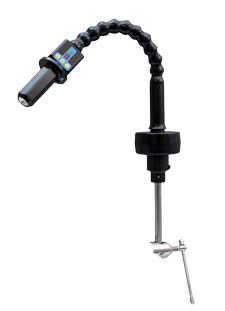 ?
?BihlerMED and View Medical
SurgiLight
Many surgeons who wear headlamps complain of neck fatigue and the inability of overhead lights to focus on specific areas. SurgiLight provides an alternative with an intense, focused LED light that attaches to overhead lighting. You can maneuver its 2-foot-long shaft to precisely direct light. The adjustable lens lets the surgeon change the beam spot size from 2 to 5 inches, depending on operating distance. The cordless device is powered by a rechargeable battery that lasts 6 to 12 hours based on intensity. Coming soon, says the company, will be an optional auxiliary mount for cameras like GoPro. A carrying case houses the light, adapter and accessories, making SurgiLight portable between ORs.
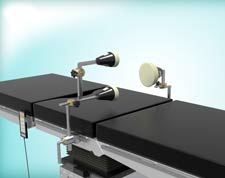 ?
?DA Surgical
Hip Fix
With total hip replacements, it's vital for the surgeon to orientate implant components in a secure, precise, reproduceable way. Hip Fix's 3-point fixation (crista iliaca and sacrum) enables stable positioning in patients of all sizes, and provides the surgeon with space and maneuverability in the surgical field. Made of stainless steel, it works with single-use pads to address patient comfort as well as to reduce risks of pressure injuries and SSIs.
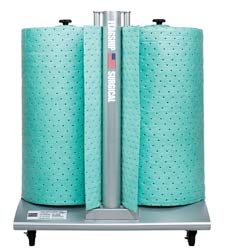 ?
?Flagship Surgical
EcoDri-Safe Absorbent Rolls
flagshipsurgical.com/eco-dri-safe
Call this the quicker picker-upper for the OR. These 100-foot rolls of absorbent, disposable floor pads can be deployed wherever fluids build up — in the OR, around scrub sinks and on lab station floors. Made with up to 33% recycled materials, the rolls offer an optional non-slip poly backing that locks in liquid and holds the pad firmly in place. The rolls are perforated every 20 inches for easy tear-off. A wheeled dispenser, sold separately, lets you roll it wherever it's needed.
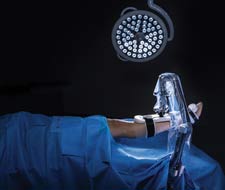 ?
?DJO Global
Adaptable Surgical Arm
Direct Anterior Approach (DAA) has become a popular hip replacement method, but it requires a large, heavy and costly procedure-specific table to position the patient and expose the surgical area. The Adaptable Surgical Arm is meant to bring DAA to more surgeons and patients by providing a much smaller and affordable alternative that works with any standard operating table. The surgeon-controlled leg and retractor holder, made of carbon fiber, weighs only 10 pounds. It also doesn't require a staffer to operate it like a specialty table would.
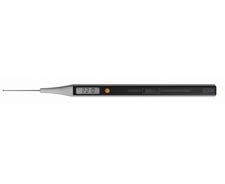 ?
?EDGe Surgical
EDG Ortho 65mm
Screw selection in orthopedic procedures can be difficult, not only in terms of choosing the correct drill depth and screw length, but also in avoiding bioburden contamination. EDGe believes this single-use electronic depth gauge will solve both problems. The company claims it's more accurate than traditional analog depth gauges with sliding scales, so it can reduce mismeasurements, and the wasted screws and implants that result from them. And of course, it also eliminates the need to reprocess gauges.
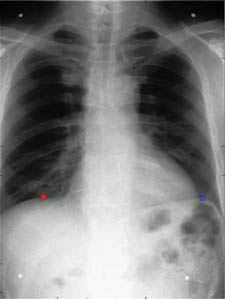 ?
?Konica Minolta
Dynamic Digital Radiography (DDR)
How would your surgeons like 300 X-ray images that capture movement, with a dose equivalent to 2 standard static X-rays? DDR, which stands for Dynamic Digital Radiography (also called X-ray in Motion), lets orthopedists view motion from standard X-ray images without fluoroscopy so they can make an on-the-spot diagnosis. It acquires up to 15 sequential radiographs per second for up to 20 seconds of physiological movement. As a result, says the company, the surgeon can observe dynamic interactions of structures such as soft tissue and bone with physiological changes over time in a single exam. Images can even be annotated.
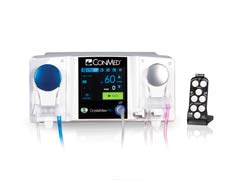 ?
?ConMed
CrystalView Pro Fluid Management System
It only takes 3 clicks on a phone-app-like touchscreen for the CrystalView fluid management system to start pumping fluid so you can "focus on the patient, not the pump." The inflow/ outflow system provides a crystal-clear field and optimal joint distention during arthroscopy. Customizable surgeon-specific presets let you recall personalized fluid settings at the touch of a button.
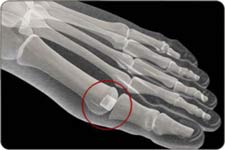 ?
?Wright Medical Group
Cartiva Synthetic Cartilage Implant (SCI)
As an alternative to fusion, you can treat big toe arthritis with Cartiva, a cylindrical, synthetic implant that the company says functions similarly to cartilage. Implantation takes about 35 minutes. Wright says Car-tiva is a superior alternative to fusion because it doesn't alter the foot's natural movement, mobility or range of motion, and requires a more rapid and less restrictive rehab program. Cartiva is exploring additional clinical indications.
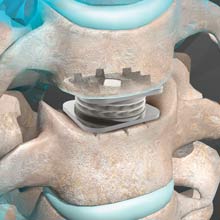 ?
?Orthofix Medical
M6-C Artificial Cervical Disc
Orthofix's M6-C, is an alternative to cervical fusion meant to mimic the structure and motion of a natural intervertebral disc. The disc could potentially reduce subsequent degeneration of adjacent vertebral segments. An artificial viscoelastic nucleus and fiber annulus is built into the design.
 ?
?Conformis
Conformis Hip System
iFit Image-to-Implant software creates hip implants specifically designed for a patient's unique anatomy by converting the patient's CT scan into a 3D computer model. The resulting implant is delivered to your facility along with single-use, patient-conforming cutting guides.
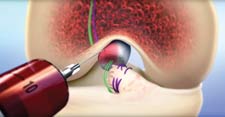 ?
?Miach Orthopaedics
Bridge-Enhanced ACL Repair (BEAR)
The BEAR implant, a bio-engineered bridging scaffold placed between the torn ACL ends, is an alternative to hamstring autograft ACL reconstruction. It holds a small amount of the patient's blood in the wound site, letting the torn ends of the ACL heal back together. The company believes BEAR can restore more normal anatomy and function of the knee. Miach posits that BEAR is worthy of further study, particularly research focused on how the patient's age affects outcomes.
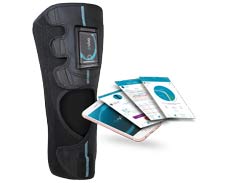 ?
?CyMedica Orthopedics
e-vive
After a successful trial at the Cleveland Clinic, CyMedica believes e-vive, its app-driven muscle strengthening device for more rapid total knee replacement rehab, is ready for prime time. It provides neuromuscular electrical stimulation in combination with a "patient engagement" smartphone app that encourages the patient to stick with their rehab program while sending data to the healthcare provider that enables progress to be monitored. Compared to the standard of care, the company claims, e-vive patients returned to function earlier with stronger quadriceps.
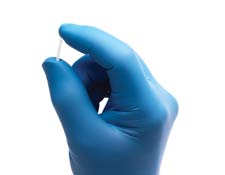 ?
?OSSIO
OSSIOfiber Bone Pin Family
OSSIOfiber is a bio-integrative, non-permanent fixation implant that the company says provides stability and maintains alignment of bone fractures, osteotomies, arthrodesis and bone grafts during the healing process. Touted as being "stronger than bone," the natural mineral fiber matrix is said to fully incorporate into the patient's native anatomy without adverse biological response within 18 to 24 months. No permanent hardware is left behind, as the bone heals naturally. OSSIOfiber requires no changes to the surgeon's existing techniques, and minimizes the need for additional surgeries, according to the company. Having just received FDA 510(k) market clearance, the company is focusing first on the foot and ankle segment for the treatment of forefoot conditions.
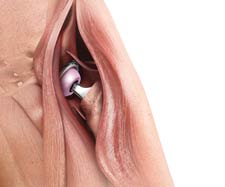 ?
?DePuy Synthes
Anterior Advantage Matta Method
DePuy Synthes's long collaboration with nationally known hip and pelvis reconstruction specialist Joel Matta, MD, has led to the Anterior Advantage Matta Method, a muscle-sparing total hip arthroplasty technique that results in less pain and quicker recovery than traditional approaches.
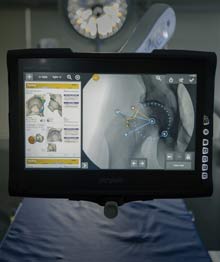 ?
?Stryker
HipMap and HipCheck
Stryker unveiled a pair of hip arthroscopy visualization tools. HipMap, a pre-op planning tool, provides an interactive 3D view of the hip to aid the surgeon's decision-making process. It delivers a report with cam and pincer analysis, version/torsion measurements, indications for potential instability, 3D heat maps, measurement scales and more. HipCheck is a visualization tool used during surgery to help plan and execute resection, letting surgeons measure and resect cam lesions to a desired alpha angle. Surgeon and patient can then view a side-by-side comparison of pre-resection and post-resection fluoroscopy to see if the pathology was addressed appropriately.
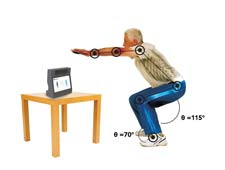 ?
?Reflexion Health
VERA (Virtual Exercise Rehabilitation Assistant)
VERA is a hardware/software platform that enables virtual at-home guidance and physical therapy to mix with onsite programs. VERAHome, installed in the patient's residence and featuring a friendly avatar trainer, supports and coaches patients through the entire surgical and rehab process. It prepares and educates patients for surgery, records exercise performance, provides feedback and enables telehealth visits from the provider.
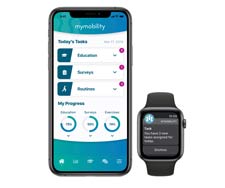 ?
?Zimmer Biomet
mymobility
Billed as a "surgical journey companion," the mymobility app uses iPhone and Apple Watch to guide patients through surgery, and connect surgical teams with patients (there's no Android support currently). The app provides information, videos and encouragement to patients while it collects and monitors data about their surgical preparation and recovery. The app also lets doctors send encrypted text, video or picture messages to patients.
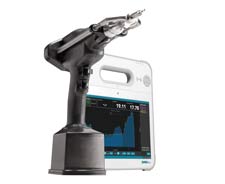 ?
?Smart Medical Devices
SMARTdrill 6.0
Conventional techniques for drilling bone and placing screws in orthopedic surgery have their drawbacks — specifically, they involve a lot of trial and error, guesswork, safety risks and, potentially, waste. SMARTdrill 6.0 seeks to solve this problem — and reduce the number of steps to place surgical hardware — with digital technology. It provides surgeons with real-time drilling data and drill bit location, which can inform clinical decisions and choice of implant hardware. The company says it reduces drill and screw plunge and accurately measures depth, torque and energy in real time, presenting data to the surgeon via a graphical user interface.
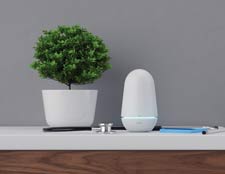 ?
?Robin Healthcare
Robin
Patients really don't like it when doctors spend an entire appointment furiously typing into a computer rather than looking them in the eyes. For the most part, neither do doctors. Robin's solution is to remove that pesky keyboard from the equation by placing an Alexa-like device in the room that performs tasks based on the clinician's natural dialogue with the patient. Robin submits the data it gathers directly into the patient's electronic medical record — all the clinician needs to do is review and sign. The company guarantees it will issue refunds if its documentation is considered incomplete for a reimbursement claim.
 ?
?Nephron Pharmaceuticals
Ketorolac Plastic Vial
Non-opioid pain management was a huge topic at AAOS, as was the wave of drug shortages. Nephron stepped up with a solution that addresses both issues. The nonsteroidal anti-inflammatory pain management drug Ketorolac, compelling as an alternative to opioids, is currently in short supply. Nephron, through its 503B outsourcing facility, says it can more speedily provide the drug thanks to its "rapid sterility" equipment. Perhaps more compellingly, the drug is delivered in a plastic vial, as opposed to glass. No needle is required; the product can be drawn up using a luer-lock syringe that also reduces leakage and splatter.
.svg?sfvrsn=be606e78_3)
.svg?sfvrsn=56b2f850_5)